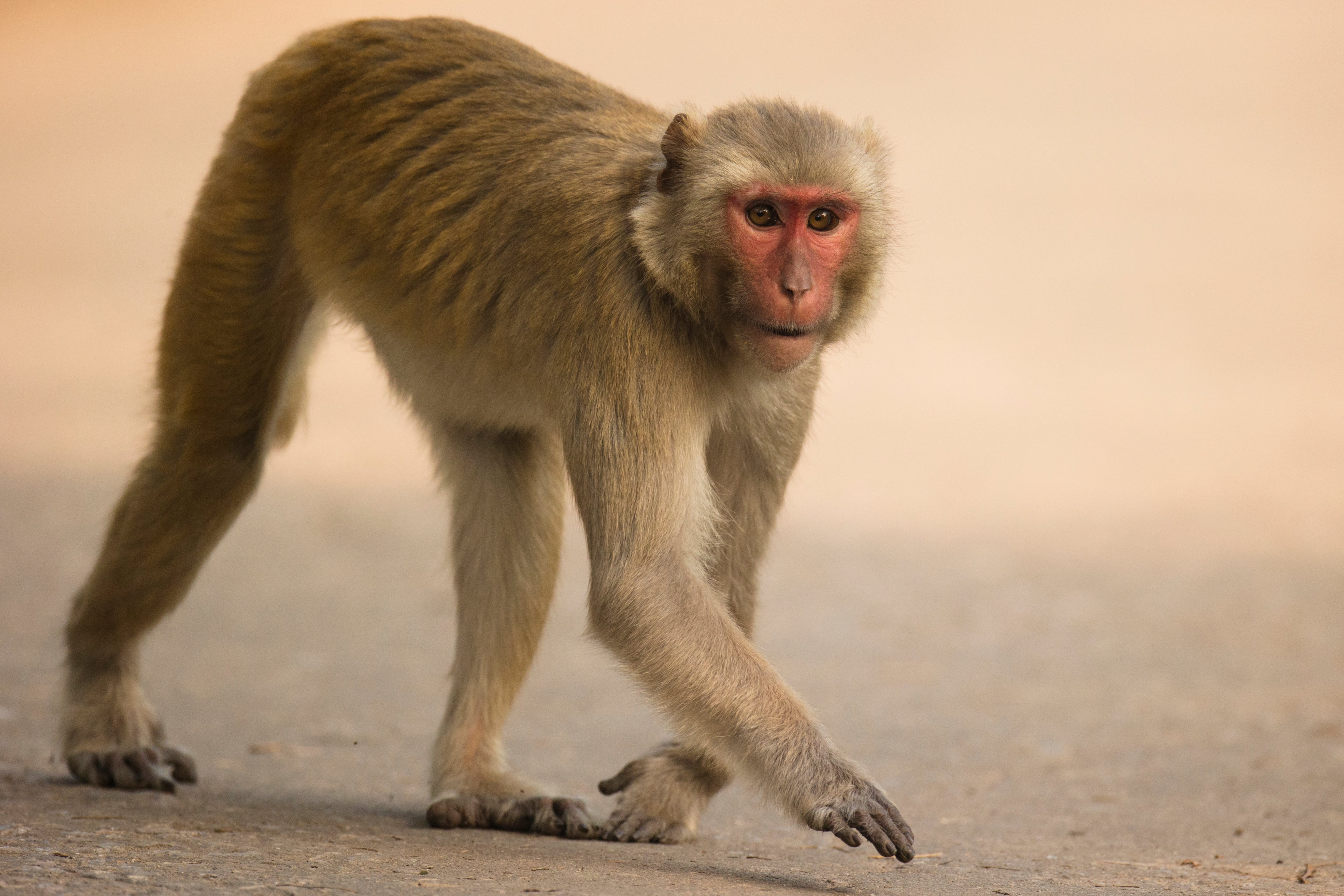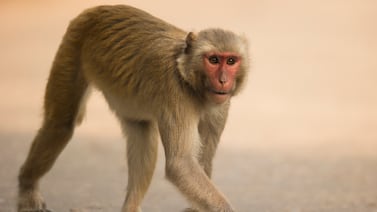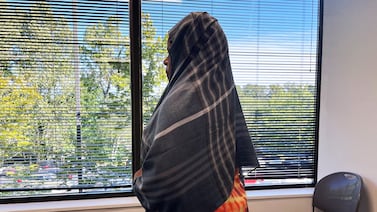Public health, explained: Sign up to receive Healthbeat’s free national newsletter here.
The crash of a truckload of research monkeys this week in Mississippi is the latest safety breach involving a national primate research center run by Tulane University.
The Tulane National Biomedical Research Center in Covington, La., drew national media attention in 2015 when a deadly foreign-strain of bacteria – that poses a significant public health threat in other countries – escaped one of the center’s high-containment laboratories.
That incident, which I reported on at the time for USA Today and further investigated for a recent book on the risks posed by lab accidents, is one of several biosafety lapses that have occurred over the years at the research facility. Until it was renamed this month, the center was called the Tulane National Primate Research Center.
A Tulane spokesperson said the center’s safety history has nothing to do with Tuesday’s truck crash that resulted in the escape of some of the 21 rhesus macaques that were being transported from the university’s facility to an undisclosed destination.
“This incident is completely unrelated to the other issues you mention,” Tulane spokesman Mike Strecker said Friday in a text message to Healthbeat, noting the animals were not owned or transported by the center. “The primates in this week’s tragic accident were not carrying any diseases and had received recent checkups confirming that they were pathogen-free.”
Here are four things to know about some of the Tulane research center’s past biosafety breaches, which are detailed in a full chapter about the facility in my book, “Pandora’s Gamble: Lab Leaks, Pandemics, and a World at Risk.”
Deadly bacteria escaped Tulane center’s lab in 2014
In late 2014, two rhesus macaques – part of the Tulane center’s massive monkey breeding operation that involved about 4,000 animals kept in outdoor cages – became ill. Tests ultimately revealed they were infected with a lab-strain of a dangerous bacterium called Burkholderia pseudomallei.
The monkeys, as breeding stock, had never been used in any experiments. Their outdoor cages were on the other side of the center’s 500-acre compound, far from the secure and federally regulated biosafety level 3 lab where scientists had been using this specific strain of bacteria.
The strain, called 1026b, was not one that could be found naturally in the United States. It had been isolated from a rice farmer in Thailand who became infected in 1993.
Burkholderia pseudomallei causes a disease called melioidosis that can be fatal in people and animals. The disease, which is spread through contact with bacteria-contaminated water or soil, as well as by breathing contaminated dust or water droplets, is difficult to diagnose. The bacteria is often studied because of its potential to be used as a biological weapon and the need to develop treatments against the disease.
The bacterium is rarely found in the United States, but poses a significant public health risk in parts of the world with tropical climates where it is common, especially Southeast Asia and northern Australia.
The bacteria’s release from the center’s secure lab worried local, state, and federal officials because Burkholderia pseudomallei bacteria, which can cause fatal infections in people, lives and grows in warm, moist soil.
These conditions were present in the dirt and grass floored cages where the sick monkeys had been living – raising concerns about the potential for contamination of the wider environment in that part of Louisiana.
CDC investigators blamed sloppy lab practices for bacteria release
Lab regulators from the Centers for Disease Control and Prevention announced in March 2015 that the federal investigation concluded the most likely cause of the bacteria getting out of Tulane’s secure lab involved the organism hitching a ride to the monkeys on contaminated worker clothing.
Federal inspectors determined that workers routinely entered the secure lab without wearing appropriate personal protective gear, increasing the risk of unknowingly carrying bacteria out of the lab or becoming infected. The monkeys, the CDC said, may have become infected either in their outdoor cages or in an on-site veterinary clinic where they went for routine care and treatments.
“CDC has found no evidence to date to suggest the organism was released into the surrounding environment, and therefore it’s unlikely there is any threat to the general population,” the agency told the public.
USDA investigators privately warned of risk to Louisiana’s environment
Investigators for another federal agency, however, saw the situation differently.
According to a copy of a 58-page risk assessment, obtained for “Pandora’s Gamble” through public records requests, investigators from the U.S. Department of Agriculture saw several plausible ways the bacteria could have escaped the facility’s labs.
They concluded, however, that contaminated laboratory wastewater was the most likely way the bacteria escaped the lab and infected monkeys in the outdoor breeding colony. The USDA report found evidence that Tulane was lax in its decontamination of potentially infectious wastewater going back years – a particularly significant issue for a bacteria that lives in water and soil.
The serious biosafety breaches cited in the USDA risk assessment included the way lab workers at the Tulane center failed to decontaminate – with bleach or heat – the blood and body fluids from animals used in experiments with Burkholderia pseudomallei.
Instead, the report said, infected monkeys were “exsanguinated” – draining the blood from their bodies – “directly into the sink during the course of euthanasia and that fluids were not retained for any contact period with disinfectant before entering the drain.”
These fluids from infected monkeys then flowed into the primate center’s on-site wastewater settling ponds, the report said, noting the ponds were near the outdoor breeding colony. The USDA team noted that the nearby Bogue Falaya River, where the center’s wastewater was discharged, “is within the optimal temperature range for B. pseudomallei April through October.”
CDC inspectors privately also had concerns about the facility’s workers not properly disinfecting blood and tissue waste from infected monkeys before sending the potentially infectious materials down the drain.
“This observation raises serious concerns regarding environmental contamination due to improper decontamination of infectious fluids,” they wrote in a March 2015 inspection report marked “Sensitive But Unclassified” that I obtained for the book under the Freedom of Information Act.
In the wake of the monkey infections and regulatory concerns, Tulane officials have said that hundreds of tests have been done of the environment, wildlife, monkeys, and lab workers and that none have detected the presence of Burkholderia pseudomallei.
In response to the 2015 monkey infection incident, Tulane told me for the book that the center had “improved our biosafety program which is widely regarded as a model program for other institutions throughout the country.”
More lab wastewater safety lapses occurred in 2017
Records show that in October 2017, the USDA notified the Tulane center it could face up to $600,000 in fines for multiple violations of the Agricultural Bioterrorism Protection Act of 2002 for issues related to its release of Burkholderia pseudomallei.
The department eventually let Tulane settle the violations by paying about $39,000.
Despite safety concerns about the potential of the facility’s wastewater to release pathogens into the environment, records show that in November 2017 built-up sewage sludge was pulled out of the facility’s wastewater treatment plant that serves laboratories, then spread across the ground in an area on the primate center’s property where the debris from monkey cages was routinely dumped.
Tulane’s safety officials didn’t learn about the sludge spreading until a month after it happened, and they didn’t notify state environmental regulators until October 2018, records show.
During that gap, Tulane hired an outside expert to test soil at the dump site for the presence of Burkholderia pseudomallei and also the bacteria that cause anthrax. Both had been studied in the center’s labs, and both had the potential to contaminate the environment if they were present.
The tests did not detect the presence of these pathogens, and in correspondence with Louisiana environmental regulators, Tulane officials said they “believe that the land application of the sludge did not have an adverse effect on the environment, did not pose a threat to public health, and did not cause an emergency condition.”
In 2021, Tulane officials sought funding from the National Institutes of Health to improve systems at the research facility, including installing a system to sterilize biohazardous liquid lab waste.
“Effluent decontamination capabilities are desperately needed and will be realized through installation of the proposed effluent decontamination system,” Tulane wrote in its application, which was funded.
A spokesperson for the university told me for the book that the request involved equipment needed for future growth into new research areas and that the center’s existing programs were in compliance with waste treatment rules.
Questions remain about monkeys that escaped in Mississippi this week
In the wake of Tuesday’s truck crash on Interstate 59 in Mississippi, which resulted in some monkeys escaping and others being killed, Tulane officials have released little information about why the animals were being moved or where they were going.
The Jasper County, Mississippi, sheriff’s department initially announced on Facebook that the monkeys were aggressive, carried “hepatitis C, herpes, and COVID,” and that handling them required the use of personal protective equipment, based on what the department said the truck’s driver told local law enforcement.
The sheriff’s department later posted a short statement from Tulane, which said that the research center provides primates to other research organizations, and the monkeys involved in the crash “belong to another entity and are not infectious.” But that organization was not identified.
In text messages to Healthbeat on Friday, Tulane spokesman Strecker said it is the university’s understanding that 13 of the monkeys recovered from the crash site remain in the possession of their owner and have arrived at their original destination.
Local law enforcement has acknowledged that some of the 21 rhesus macaques monkeys that were being transported were killed by officers after the crash. Three monkeys were still on the loose as of midday Friday, according to the Mississippi Department of Wildlife, Fisheries, and Parks, whose officers are involved in the search.
Strecker said that the transport of research animals is common and usually involves contracts that prevent the disclosure of information “both for the safety of the animals and to protect the parties’ proprietary information.”
Alison Young is Healthbeat’s senior national reporter. You can reach her at ayoung@healthbeat.org or through the messaging app Signal at alisonyoungreports.48







